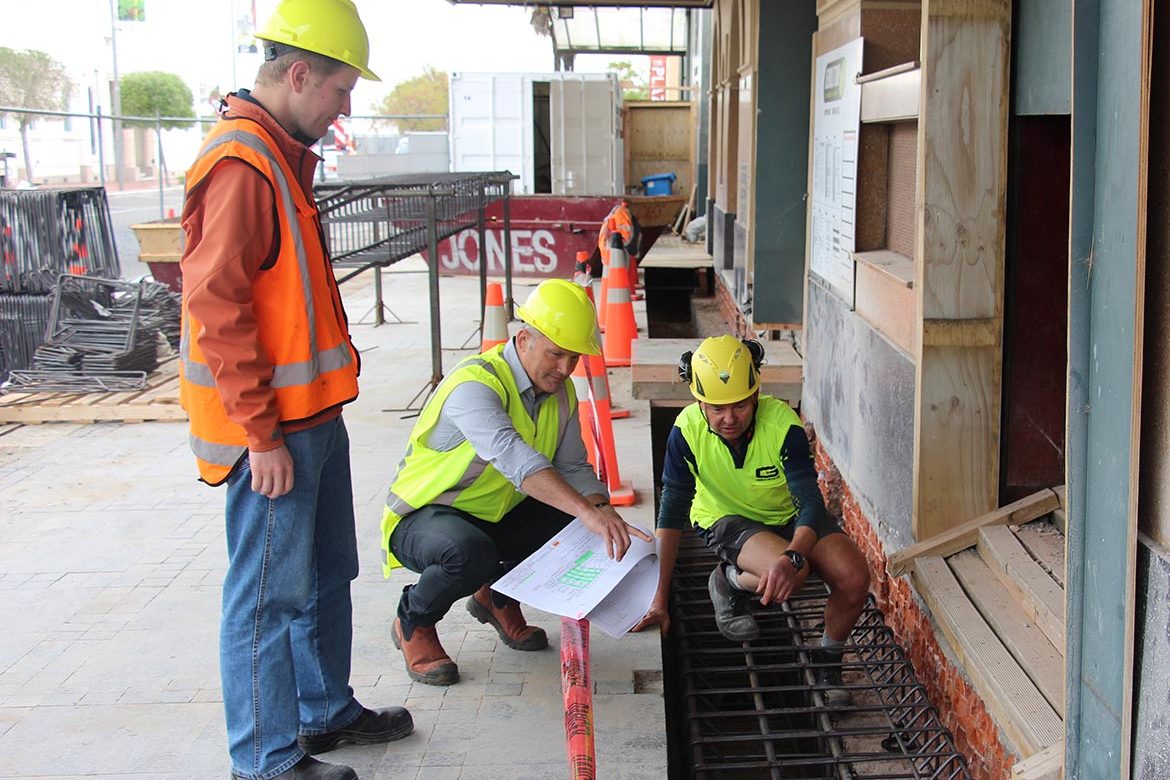Due to the new earthquake-prone building legislation, building owners across the country could be facing a mandatory structural assessment to determine whether or not their buildings are earthquake prone.
No longer will owners of older buildings be able to postpone structural assessments as the new legislation gives clear guidelines on time frames. Local councils are required to assess their building stocks to determine if they consider a building to be potentially earthquake prone based on a set of assessment parameters, such as age, building material, location and size. Once a letter of notification is received, owners will have 12 months to engage a structural engineer to undertake an assessment.
Hastings District Council has indicated they will start sending out letters in 2018. Napier City, Wairoa District and Central Hawke’s Bay councils have yet to confirm time frames but they too have a deadline of 2022 to complete their reviews.
Gerard van Veen of Hastings District Council has stated that the new profiling rules effectively reduced the number of potentially earthquake-prone buildings in Hastings compared to the old policies. “Initial estimates identified 1,200 buildings, which has now reduced considerably under the new legislation.”
Strata Group director Guy Lethbridge has been involved in seismic assessments and upgrades since the 2007 Gisborne earthquake and says the extended time frames for the council profiling, structural assessments and even the 7.5-to-15-year time frames to upgrade reflect the pressure the new policies will put on the councils and the engineering and construction industry.
“In an already busy construction environment, getting through the volume of expected assessments will be challenging.”
With tenants now more aware of building rating, it is rare for landlords of older buildings not to be asked for an indication of building strength.
“National franchises have already set minimum thresholds for buildings they currently or intend to occupy, so knowing your building strength will become a landlord expectation.”
The assessments are required to report the existing building strength as a percentage of an identical building constructed to modern day standards. Any building with an outcome of less than 34% is likely to be rated as earthquake prone and will require strengthening to achieve an outcome of greater than 34% NBS.
“While a strength outcome of, say, 35% will deem the building not earthquake prone, tenants are typically targeting a higher threshold of 67% NBS.”
The new legislation, Building (Earthquake- prone Buildings) Amendment Act 2016, came into effect on 1 July 2017 and with it came extensive criteria of what a Detailed Seismic Assessment (DSA) report must cover.
“The new reporting structure means more consistency in evaluating and reporting earthquake-prone buildings. In the past, engineers have been criticised for a spread of assessment outcomes on the same building and it is hoped that under the new regime, this range of outcomes will be reduced.”
The Act states that councils will be required to identify priority buildings such as schools, hospitals and emergency response buildings by 1 January 2020 and if assessed as earthquake prone, then any improvements must be carried out within 7.5 years. All other buildings, such as commercial buildings, are to be identified by 1 July 2022 and rectified within 15 years. Residential buildings are not included in the assessment criteria.
Guy says most of the post-1931 earthquake Art Deco buildings in Hawke’s Bay will contain unreinforced masonry and owners of these buildings should expect a letter from council.
“We would encourage building owners to do their own assessment based on the profiling parameters. If you are unsure then contact your council or an engineer for advice.
“In our experience, many building owners have not taken the news that their asset will require capital investment well; however, once the reality has set in that an upgrade is mandatory then they take a fresh new look at the building.
“Many of the older building stock are no longer fit for purpose and finding new tenants is difficult. By incorporating some layout changes and external facelift work as part of the upgrade, the building will stand out from its neighbour. We work with our clients to get the building ready for market.”
Strata Group has been involved in assessments across the East Cape and has observed that the Napier and Hastings building stock is better than the surrounding districts.
“The 1931 earthquake and subsequent fire destroyed many of the older buildings in Hawke’s Bay and the replacement buildings were of a higher standard. Buildings in other areas still have pre-1931 building stock, which generally result in lower strength outcomes.”
The 20-strong Strata Group team has already completed a large number of building assessments, both under the previous Act and now under the new amendment. Strata Group has assessed buildings such as the Hawke’s Bay Opera House, which is currently undergoing strengthening, as well as Napier’s Civic Administration and Library buildings.
“These high-profile cases have prompted a great deal of debate around true risk and perceived risk. The Building Act has given engineers an assessment benchmark, an assessment process and specific reporting parameters. We hope the public don’t shoot the messengers if the news isn’t good.”
Guy says building owners who don’t know the strength of their buildings potentially reduce options around sale and purchase, refinancing, tenant lease negotiations, insurance premiums and general peace of mind.
“We appreciate that potential unforecasted costs of hundreds of thousands of dollars to upgrade your building is a bitter pill to swallow, but the option to bury your head in the sand is no longer available.”
Guy’s parting advice is that building owners who think their building will be profiled as potentially earthquake prone should talk to a local structural engineer and get an indication of time and costs of an assessment. The risk of not doing this is you may be at the end of the queue and that could present a risk of losing your tenant.
www.sratagroup.net.nz



